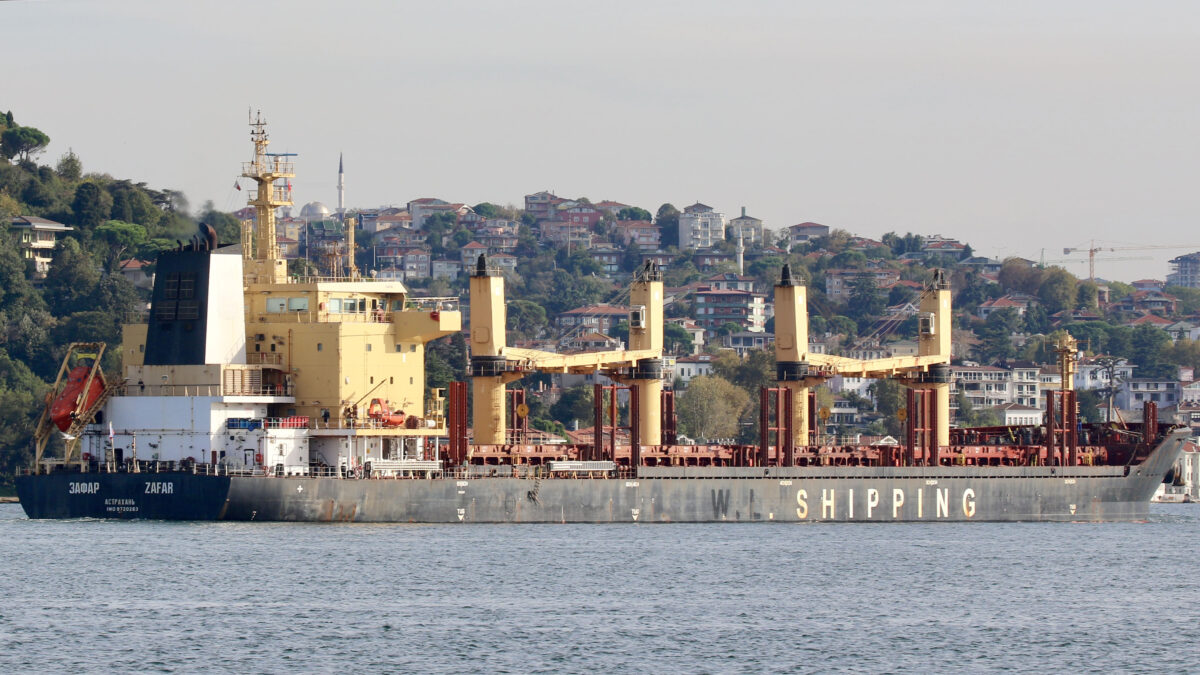Tracking Russian Military Vehicles on the Move
As military equipment has been transported towards Russia and Belarus’ borders with Ukraine in recent months, professional and enthusiast researchers alike have sought to and gather information about the the types of vehicles that are on the move.
One open source technique that has helped with this task is the monitoring of vehicle licence plates.
More so than most countries in the west, there are a wealth of resources that catalogue both notable and ordinary licence plates in Russia. In this guide, we will detail some of the ways to interpret licence plates of Russian vehicles, ranging from normal civilian cars to military and police vehicles. We will also take a tour through some of the freely available, public databases cataloguing licence plates across the country and its regions.
While the mass movement of Russian military equipment to the border with Ukraine, both domestically and in Belarus, has created opportunities to put licence plate monitoring into practice, it must be noted that a researcher will not be able to identify an individual owner of a military licence plate. They can, however, discover what parts of the Ministries of Defense or other security apparatus are transporting their equipment towards Ukraine, giving further clues as to military movements on a broader scale.
On February 5, for example, a popular military Telegram channel shared a video allegedly showing military equipment within 100 kilometres of the Ukrainian border in Russia’s Belgorod Oblast.
Rosgvardia column reportedly in Gubkin, Belgorod oblast. Patrul MRAPs, Avtozaks, and trucks. 1065/https://t.co/9BNyahGmO4 pic.twitter.com/mFUVrNJdae
— Rob Lee (@RALee85) February 7, 2022
Almost every licence plate in this clip is not discernible, but one towards the end can be read.
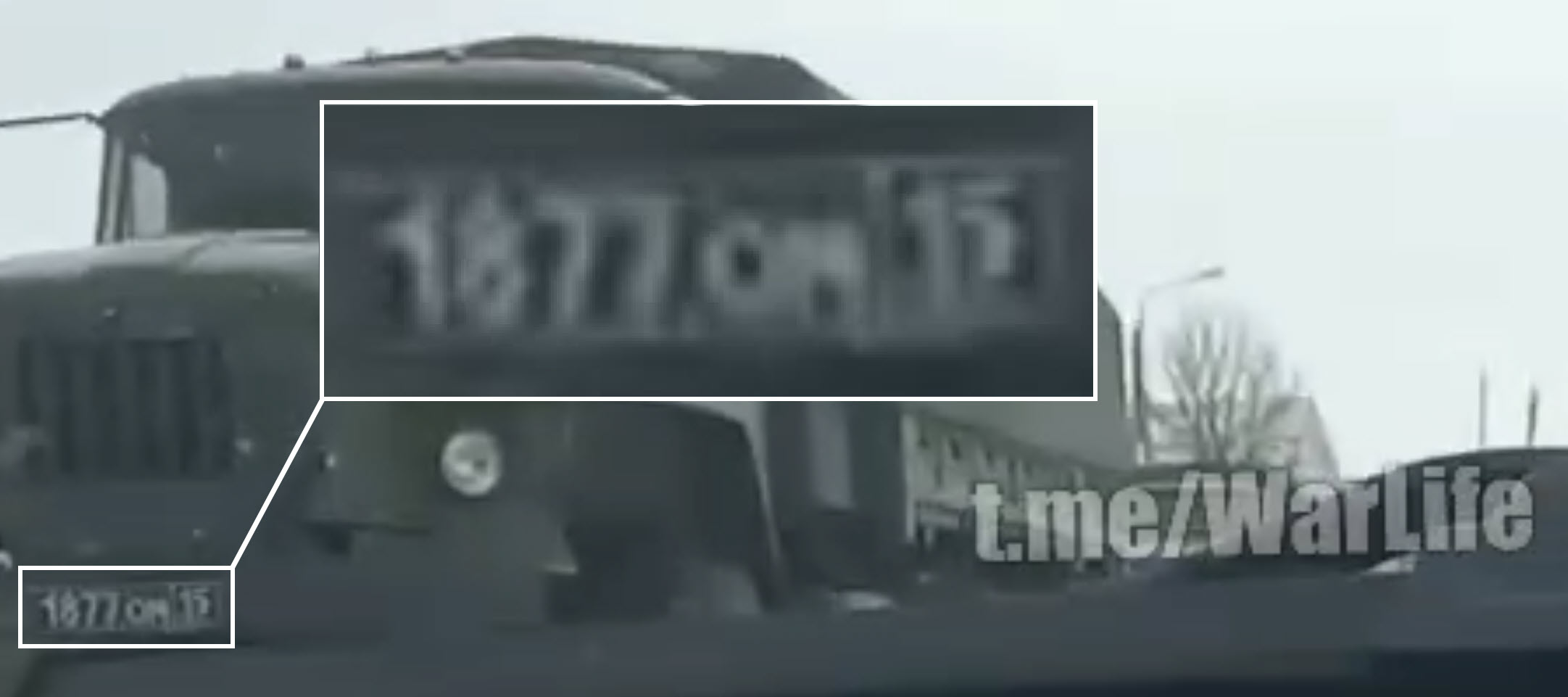
Ural transport truck with black military/state security plates, reportedly filmed near the Ukrainian border
Examining the video frame-by-frame, we can make out the black plate number: 1877ОМ15.
By the end of this guide, you will be able to draw conclusions from this plate number, and have an idea of how to approach this data in future investigations.
Plate Formats
A brief breakdown of the most common types of Russian plates and the key areas of information on them is sufficient for most investigations.
- White plates are for normal, civilian vehicles, including typical cars, motorcycles, and semi-truck trailers.
- Red plates are for diplomatic vehicles, with the first three numbers of the plate designating the country whose embassy registered the vehicle.
- Yellow plates are transport vehicles.
- Blue plates are for police, with the first letter noting the vehicle’s function (e.g. traffic police).
- Black plates are military and state security-related licence plates, ranging from cars used in ceremonial parades to cargo transport trucks.
The last two digits of the white, red, blue, and yellow plates designate the area code where the vehicle is registered, such as 16 (Tatarstan) or 72 (Tyumen Oblast). A list of these region codes can be found here (Russian) and here (English). Note that blue plates with a -99 region, which is ostensibly for Moscow, can often be deployed all over the country, as they have federal registration.
With black plates, however, the last two digits do not designate the location where the vehicle is registered, but rather the part of the Ministry of Defense or other security apparatuses (such as the National Guard) it belongs to.
Below, we can see a car with the red licence plate 004 D748 99. The red colour of the plate designates it as a diplomatic plate, the first three digits (004) note the country of the diplomatic plate (United States), the letter (D) notes that the registrant holds diplomatic status, the next three numbers are the plate’s registration number (748), and the final digits (99) note where the car was registered – the Moscow oblast.
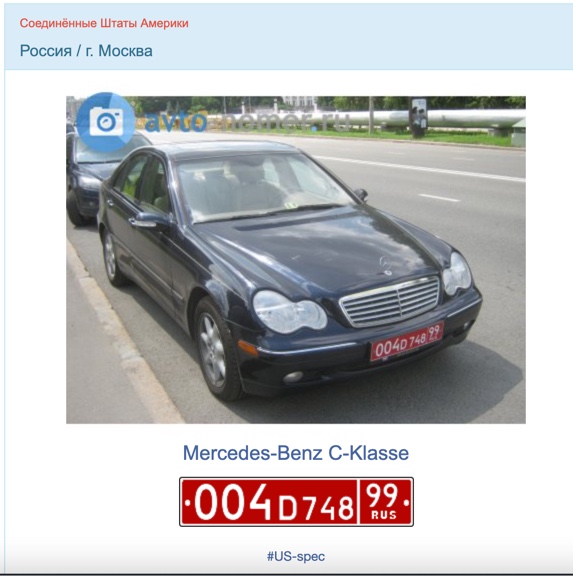
Licence plate information for an American diplomatic vehicle, from avto-nomer.ru
The exact formatting and numbering of licence plates is buried in bureaucratic classifications and bylines – the best resource for a detailed breakdown of this system can be found on the Russian Wikipedia page for the country’s transport registration numbers.
Public Databases of Licence Plates
The numerous websites that catalogue Russian (and foreign) licence plates compile the bulk of their data from user-submitted photographs, though there are some other sources, such as photographs from traffic authorities showing vehicles committing traffic violations. Additionally, some of these websites pull photographs from sites like Avito (roughly comparable to Craigslist, a classified adverts site which is popular in the US and other countries) where used cars are sold, with licence plates usually visible in ad posts. While some of these sites have “exclusive” photographs uploaded by their users, many are quite liberal in compiling photographs from other sources – for example, it is not uncommon to find a car photograph in the Migalki.net database bearing the watermark of a competing site.
All of these platforms raise an understandable question – why in the world do so many Russians care about licence plates? There are a few answers to this, one of which is rooted in an interesting subculture of “beautiful” licence plate numbers. A thread on the o001oo.ru message board, for example, has over 150,000 views, with user-submitted photos of licence plates in Moscow of cars with interesting plate numbers. Many of these plates centre on the coveted 777 sequences, such as Т444ТТ77, Т777МО77, and В777ВВ190.
Another reason for the popularity of photographing cars is naming-and-shaming. The Russian “Stop Kham” movement and Ukrainian “Parking Hero” site both publish reams of photographs and videos of inconsiderate drivers, more often than not very wealthy individuals who felt little shame in parking on a sidewalk. Often, the subjects of the “beautiful plate” spotters and the bad parking-job tattlers are one and the same.
Avto-Nomer.ru (English version at Platesmania.com)
If you can wade through the ads and spam, Avto-Nomer (also branded as Platesmania for the English-language version of the site) may host the most comprehensive freely-available set of Russian licence plates. Outside of Russia, the site also contains plates from many other countries, but the Russian ones make up a significant part of the site’s data – Avto-Nomer self reports that they have about 11 million Russian plates, and six million from other countries.
The search features on Avto-Nomer are robust, allowing for searches with the following parameters :
- Classification of vehicle (automobile, diplomatic, motorcycle, etc.)
- Licence plate number
- Region of registration
- Diplomatic country of registration
- Design of plate (one/two rows, flag/no flag)
- Make and model of vehicle
- Additional information
- Sub-classification (fire vehicle, bus, taxi, etc.)
- ID number of user uploading photograph
- Minimum number of comments on photograph
- Minimum number of likes on photograph
Thus, in the search below, the categories of diplomatic country of registration (United States) and make of vehicle (Mercedes-Benz) are selected, bringing up 38 results of American diplomatic vehicles manufactured by Mercedes-Benz.
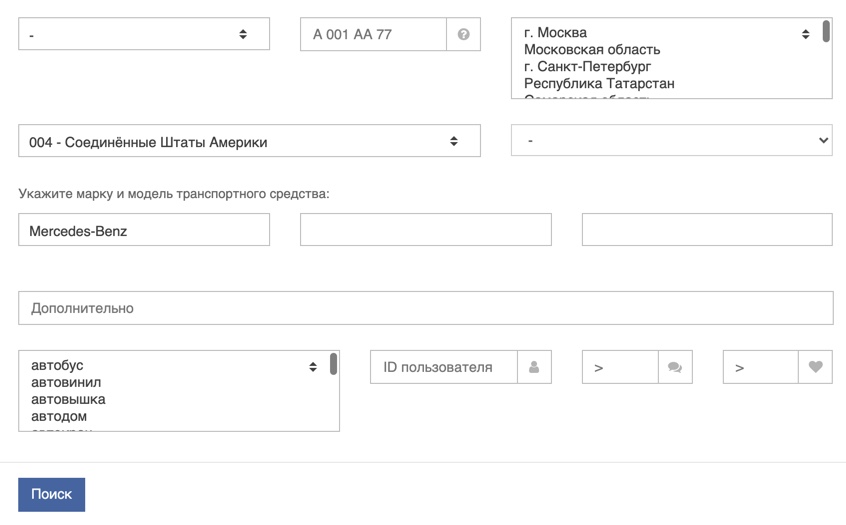
Advanced search function on Avto-Nomer
Migalki.net
While the number of photographs hosted on Migalki is a fraction of that of Avto-Nomer – a shade under a million for Migalki and tens of millions for Avto-Nomer – the dataset for this site is often focused on interesting licence plates, as it also hosts a marketplace for users to sell licence plate numbers. Reflecting the site’s name, many of these interesting plates belong to government vehicles that use a migalka – a blue siren used exclusively by state officials and, especially before reforms were passed, very wealthy individuals trying to bypass busy traffic.
The search functions on Migakli.net are not as robust as Avto-Nomer.ru, but they usually work fine. By scrolling to the bottom of the page, you can run a wildcard-driven search for various types of plates, allowing you to find a range of results fitting the type of plate you want to find.
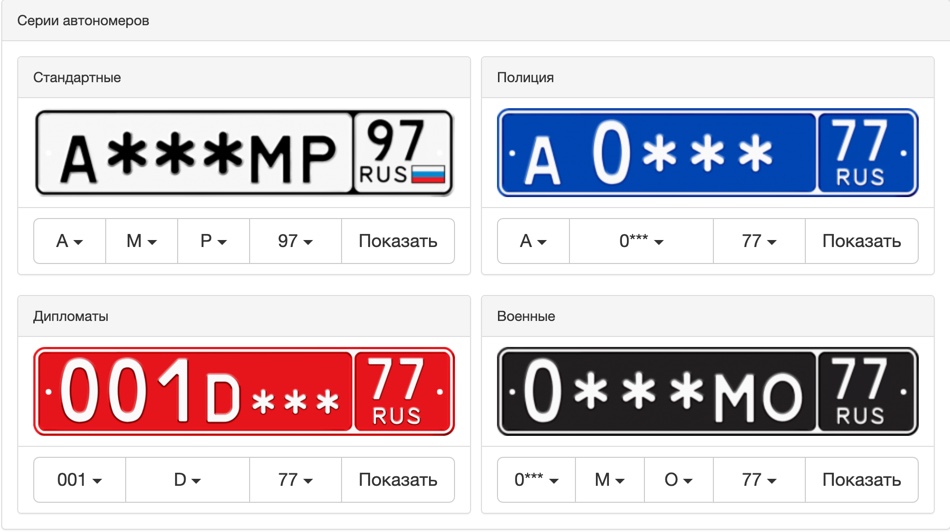
Migalki search function with four plate types
For example, by running a search on the first option above, we find the vehicle with the plate А005МР97, with a migalka on the roof (as seen in the image below). The АМР97 plate series is widely recognised to be those belonging to various security services, including the FSB (and private individuals looking for an especially prestigious plate number). Thus, migalki.net has a special search area just for these vehicles, as they are far more interesting to trace than the average civilian.
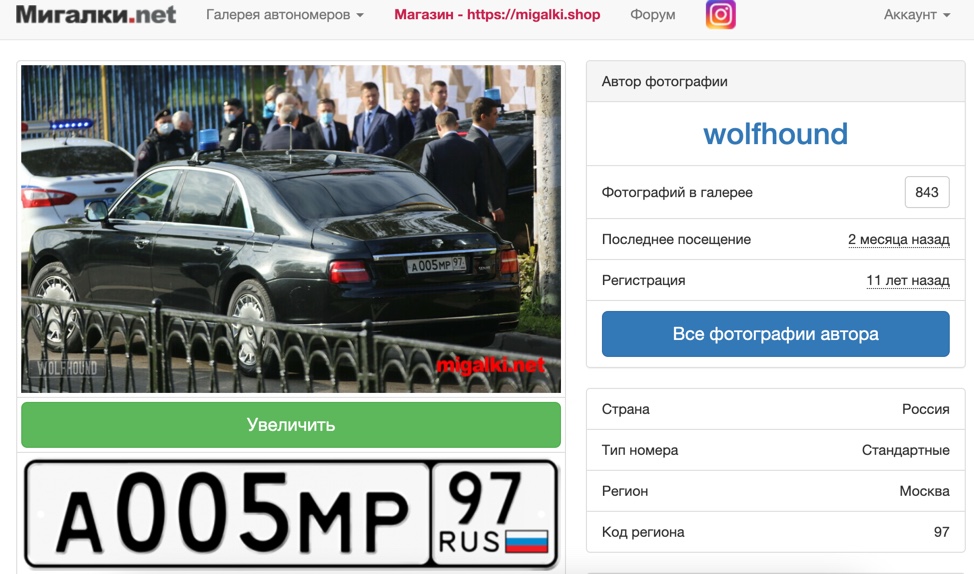
Photograph taken last year for the А005МР97 licence plate on Migalki
Nomerogram.ru
Nomerogram is both one of the most interesting and frustrating sites to use for searching licence plates. While the site pulls from social media, including Instagram and Vkontakte (VK), to build its database of licence plates, it also has virtually no in-site search features. Nomerogram will let you search exactly by a plate number or by region code, but not use wildcard search operators (e.g. А***МР97) or any other parameters.
Nomerogram does host user-uploaded photographs, like Migalki and Avto-Nomer, but the central selling point of the site is that it pulls from social networks and public advertisements showing plates.
Searching for the same А005МР97 plate detailed in the migalki.net section yields dozens of photographs of this plate – 31 user-uploaded photos, 21 Instagram photos, 18 VK photos, and one from a site listing auto sales. Often, the plates aren’t explicitly mentioned in the social media posts, rather they are just visible in the background, likely indicating the site is using some optical character recognition algorithm to scrape these images from popular sites. An example of this can be seen in a VK post below, where the aforementioned plate is visible behind former Deputy Prime Minister Dmitry Rogozin.
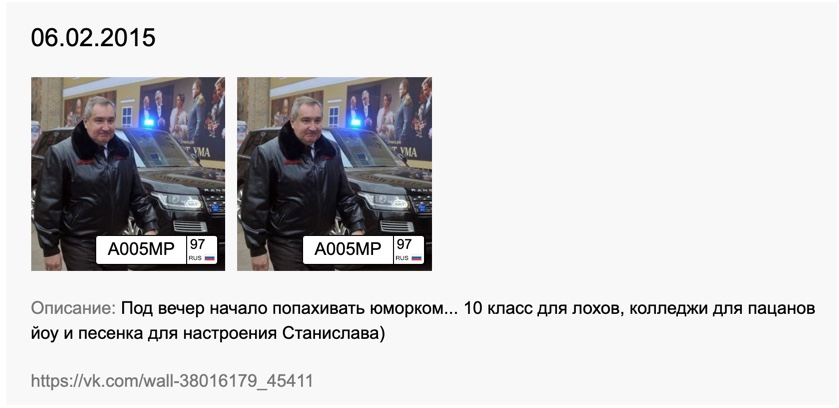
Photograph of plate А005МР97 with Dmitry Rogozin scraped from VK by Nomerogram.
Fototruck.ru and Kargoteka.info (English localization available on top-right of both sites)
The previously-listed sites largely focus on peculiarities of the Russian state and licences – plainclothes officers with special sirens, police cars, military vehicles, and so on. In contrast, Fototruck and Kargoteka are much closer to hobbyist train or aircraft enthusiast sites, highlighting heavy equipment and industrial vehicles. We can observe the difference in the priorities of the sites’ users by examining their search functions. The primary search features of Nomerogram, Migalki, and Avto-Nomer are centred on licence plates themselves; however, with Fototruck and Kargoteka, the emphasis is placed on the types of vehicle.
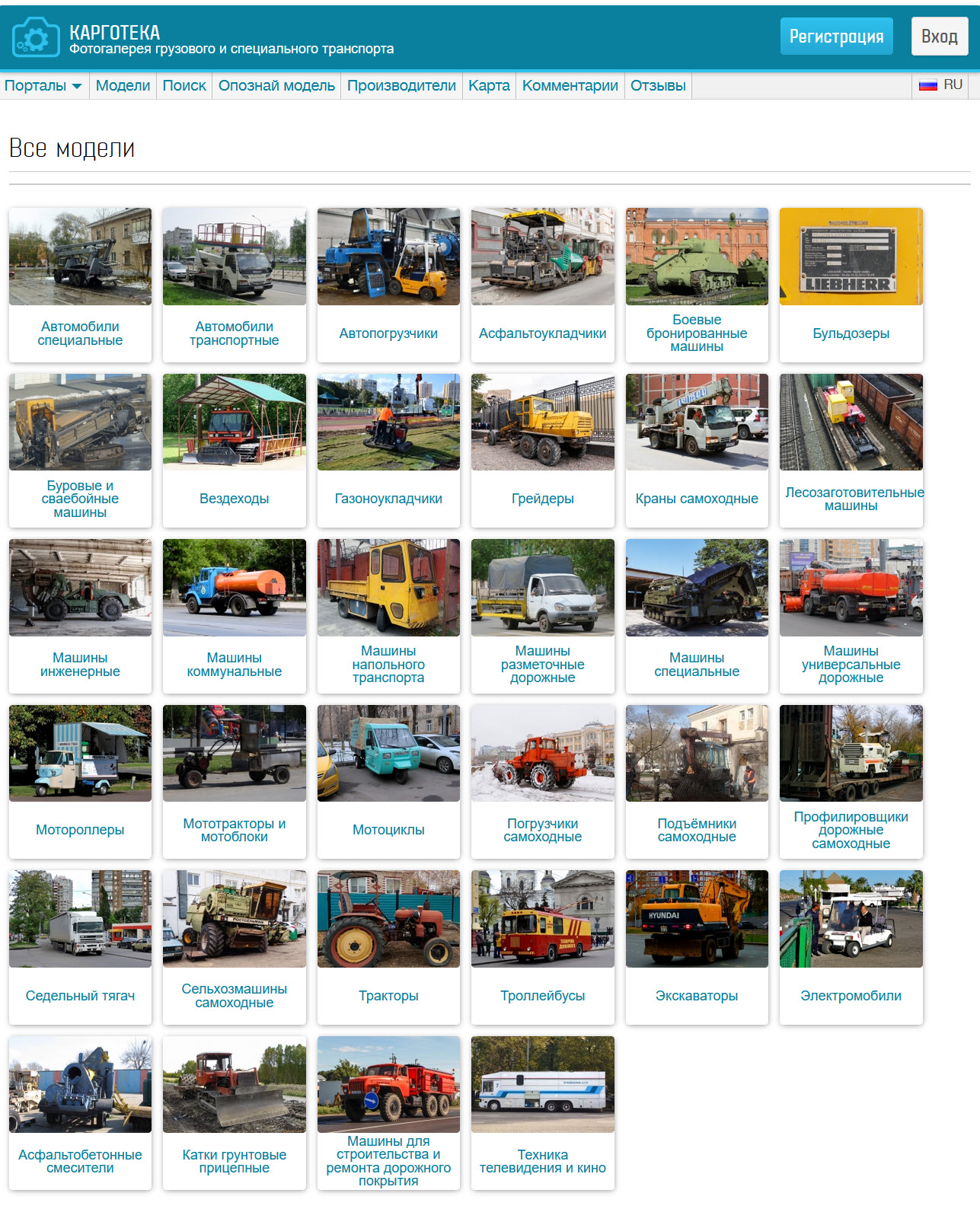
List of types of vehicles and equipment on Kargoteka
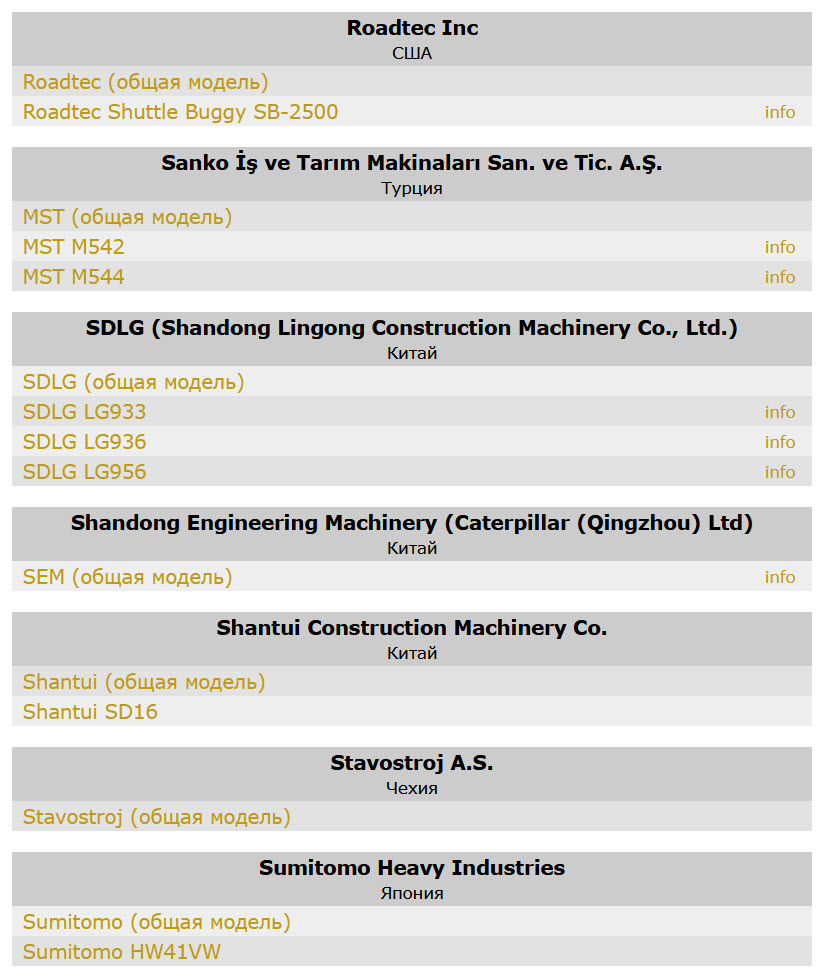
List of heavy equipment manufacturers and models on Fototruck
Most of the equipment and vehicles catalogued on these two sites are of very little interest to most researchers – hobbyists and enthusiasts may get excited for a photo of a restored Khrushchev-era tractor in Cheboksary, but most won’t. The most interesting entries of these data sets are linked to heavy cargo trucks linked to military movements, along with vehicles explicitly marked as military equipment, though many of these entries are in museums.
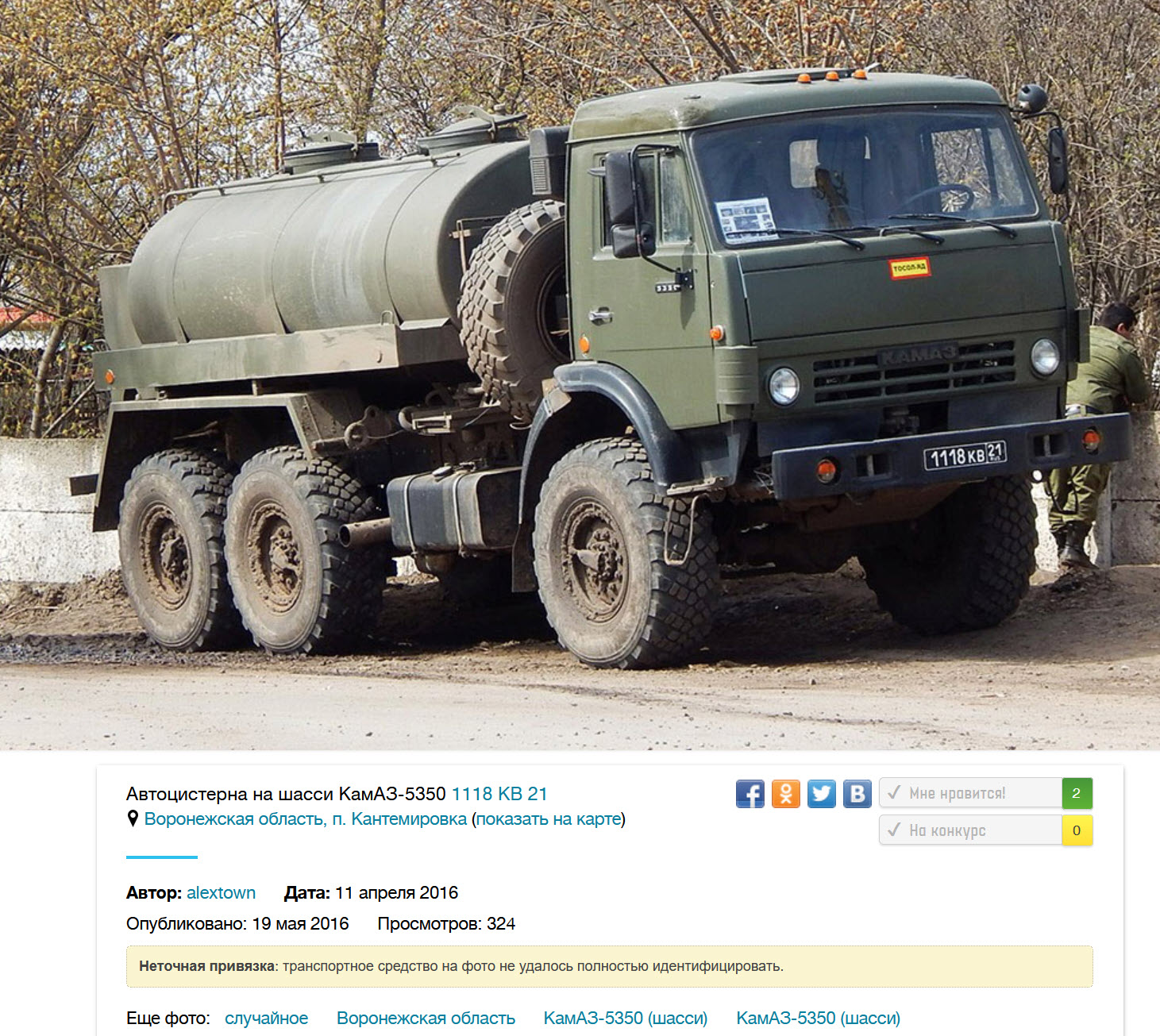
A 2016 photograph of a military transport truck near Voronezh
In its advance search feature, Kargoteka allows for the following parameters (top-left to bottom-right in the image below):
- Vehicle type (bulldozer, tractor, bus, etc.)
- Country
- Vehicle purpose (military, sanitation, etc)
- Vehicle sub-type (extension of “Vehicle type” category)
- Region (city, oblast, etc.)
- Specification (extension of “Vehicle purpose” category)
- Manufacturer
- Model
- User who uploaded image

Advanced search function on Kargoteka
Kargoteka allows for a search on a map, as most of the site’s uploaded photographs have accurate coordinates. However, there are no parameters to restrict results on the map for time, vehicle type, or other details.
The search functions on Fototruck are more limited than Kargoteka, only allowing for a search of licence plate number and location where the photograph was taken. Your best bet is to craft advanced searches on the site via Google or Yandex if you do not know exactly what type of vehicle you are searching for. For example, if you are looking for photographs of the BTM-3, a Soviet-era trench-digging machine, you can run a simple search to bypass Fototruck’s clunky interface:
site:fototruck.ru “БТМ-3”
This search will bring up a handful of results, including photographs of this trench-digging machine on Fototruck. After clicking on the hyperlinked category of the BTM-3 on the photo, you can find a list of all of these photographs here.
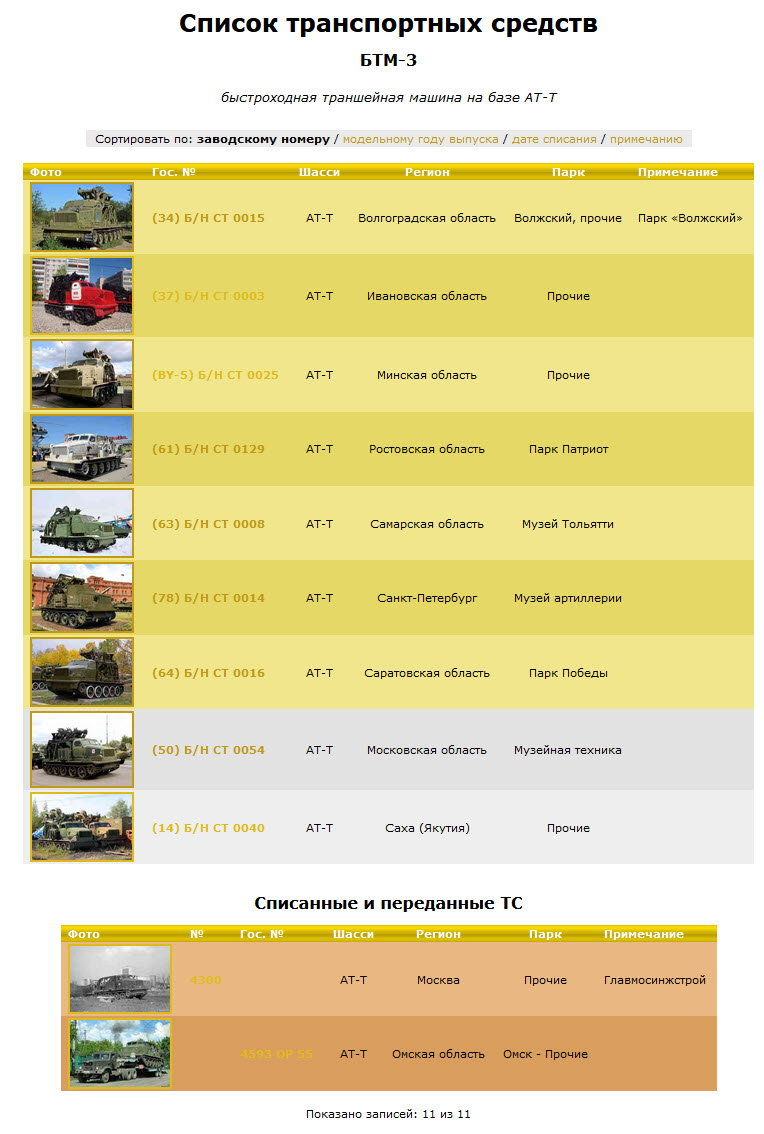
Results for the BTM-3 trench digger on Fototruck
Rosgvardia Near the Border
Now, let’s return to the licence plate we started with at the beginning of this guide – 1877ОМ15, sighted near the Ukrainian border.

Ural transport truck with black military/state security plates, reportedly filmed near the Ukrainian border
At the time of publication, this plate does not appear on any of the major services listed; however, there are still ways to analyse it.
The first four digits and two letters (1877ОМ) are not important unless you are specifically tracing this exact plate with previous appearances; however, the last two digits – 15 – tell us through simple Google searches (seen here and here) that this vehicle is part of Rosgvardia (National Guard) of Russia’s Interior Ministry. This deployment is relatively new, with analysts noting that this may be a worrying escalation in the build-up on the Ukrainian border.
A wildcard search on Avto-Nomer for other vehicles with this plate construction – ****ОМ15 (with the registration numbers set as wildcards) – brings back hundreds of results of black military plates used by Rosgvardia, including large Ural transport trucks like the one seen in the recent video.
Further investigation can include other appearances of black -15 licence plates, other interesting plates’ number designations and the same and similar models of Ural truck to paint a fuller picture of what parts of the Russian security apparatus have been deployed towards the country’s southwestern border.
Bellingcat is a non-profit and the ability to carry out our work is dependent on the kind support of individual donors. If you would like to support our work, you can do so here. You can also subscribe to our Patreon channel here. Subscribe to our Newsletter and follow us on Twitter here.

